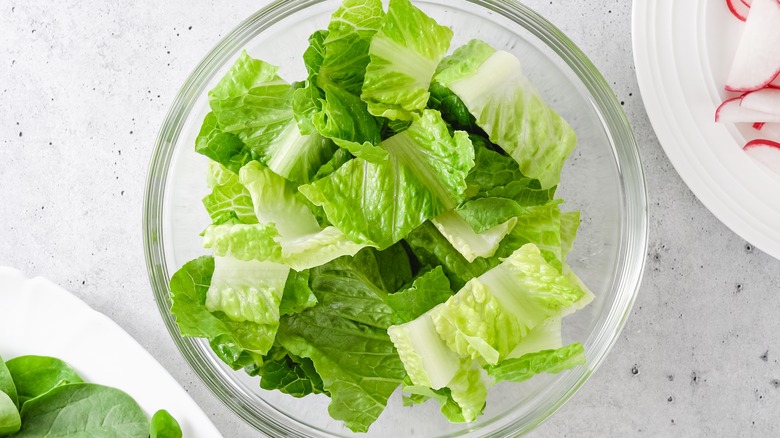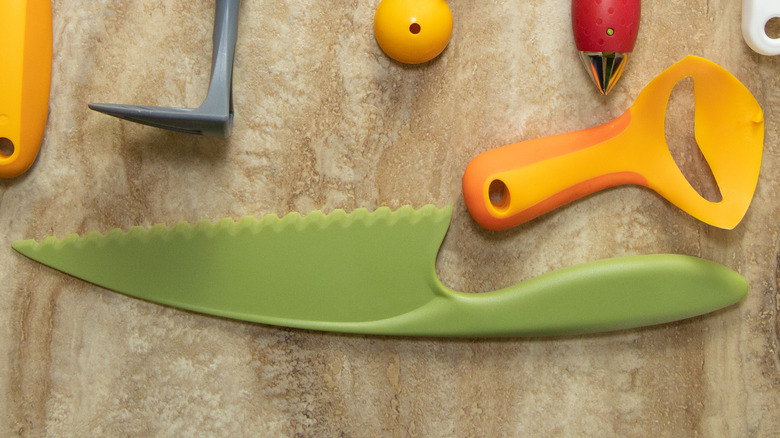Plastic Lettuce Knives Are The Key To Crisp Chopped Greens
There are numerous gadgets and gizmos that claim to simplify and improve the execution of your culinary endeavors. Of these many tools, the humble lettuce knife promises exceptionally great things. Despite the fact that the ultra blunt knife looks like it could be part of a child's play set, make no mistake that it's the key to keeping lettuce crisp, crunchy, and perfectly green.
The secret to the lettuce knife's success is a bit of mystery. Although America's Test Kitchen has proven its ability to prevent browning, the exact reason as to why it does is hard to pinpoint. One theory is that material makes a difference. Since lettuce knives boast a plastic (or nylon) blade, this is said to deter the rate of oxidation and consequent shriveling, with many attributing this phenomenon to the fact that metals like steel and iron can trigger a chemical reaction that negatively impacts the produce. Another possible reason is that unlike the sharp and smooth blade of a chef's knife, the dull and serrated edge of a lettuce knife does less damage to leaves' cell walls, much like hand-tearing.
While some may argue that plastic lettuce knives are just a marketing ploy, we do find value in the tool. Ultimately, it will help cut greens uniformly and delay oxidation in the process. If nothing more, it's a versatile knife that can even be used to cut into a tray of baked goods, making it a worthy investment.
Sadly, a lettuce knife isn't a fool-proof solution for making lettuce last longer
A knife designed for cutting heads of lettuce will no doubt be helpful in slowing down browning and wilting. However, remember that these plastic knives won't extend shelf life for more than a few days in comparison to lettuce that's been cut with a metal knife or even hand-torn leaves. So, rather than fret over which knife to use, make proper storage a priority instead.
For starters, it's best to wash and chop romaine, iceberg, and any other greens as you need them. If you prefer having ready-to-use leaves at your fingertips then make sure to store any cleaned (and thoroughly dried!) lettuce, accordingly — roll and wrap them in a paper towel, or load leaves into a container fitted with a draining compartment. Additionally, make sure to work with a clean knife so as to prevent any bacteria from affecting fresh leaves.
Regardless of whether you prep lettuce beforehand or just prior consuming, always store it in the crisper drawer of your fridge. The high-humidity environment will keep greens vibrant. To further prevent premature spoilage, keep delicate lettuces away from produce like apples or avocados that emit ethylene gas. Of course, since nothing lasts forever, we recommend buying only as much lettuce as you need, putting leaves to good use in all sorts of colorful and drool-worthy salads before browning really sets in.

